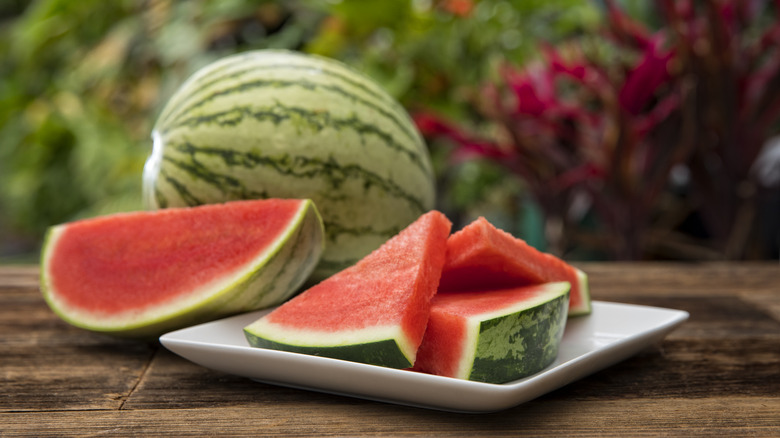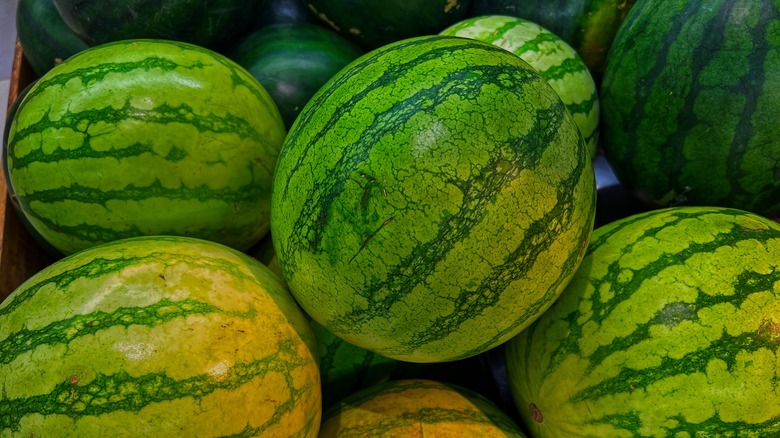Pick Out Ripe Watermelon Every Time With This 2-Finger Trick
Watermelon, when ripe, can be a hydrating and nutritious summer snack. While unripe watermelon, too, can satiate your hunger and thirst, it may not be quite as nutritious, nor will it typically taste as good. While there are all kinds of tips and tricks for ripening your tomatoes and bananas after you buy them, these won't work for watermelons, even if you could find a paper bag that's big enough. This means that your best bet is to know how to pick out a fresh one before you buy.
One unusual tip comes straight from the farmer's mouth, or so it's been reported. This viral watermelon-buying hack seems to have originated on an Australian Facebook group called Mum Central. One of the mum members (mumbers?) claims to have spoken with a watermelon farmer who told them to make sure that they could fit two fingers between the green stripes on a melon. Other sources, also citing unnamed watermelon farmers, seem to feel that the white stripes should be two fingers apart, so it's to be hoped, should you choose this method of measuring ripeness, that your melon has stripes of equal width. As to the fact that fingers vary in thickness, and yours may be smaller (or larger) than any given farmer's ... Well, we can't speak to that.
There are several other ways to determine your melon's ripeness
Luckily, the watermelon-testing method that relies on both stripes and fingers being of standardized size isn't the only one out there. Sure, go ahead and use it for fun — many people apparently swear by its effectiveness — but it's best to have a backup method to increase the odds of choosing a good watermelon.
One common method people use is to "thump" the side of the melon, although this can be a bit iffy. Supposedly an unripe melon will go "ping" while an overripe one will make more of a "thud" sound, but unless you're confident of your ability to determine a happy medium (a "pud," perhaps, or a "thing?"), this may leave you feeling more confused than enlightened. Instead, you can pick up a few watermelons to feel their weight. If any are noticeably lighter, there's a chance they're unripe, while heavier ones may be too ripe.
Look at the outside of the melon, too — the spot where it rested on the ground should be cream-colored or yellowish. If it's still white or even green, the melon was likely picked before its time. Finally, give the melon's end a poke. If it's hard, it may be unripe. If it's squishy, it'll be overripe. If it's got a bit of give to it, but not too much, it might be just right. You go, Goldilocks! Pick up that perfect melon and make it your own.

